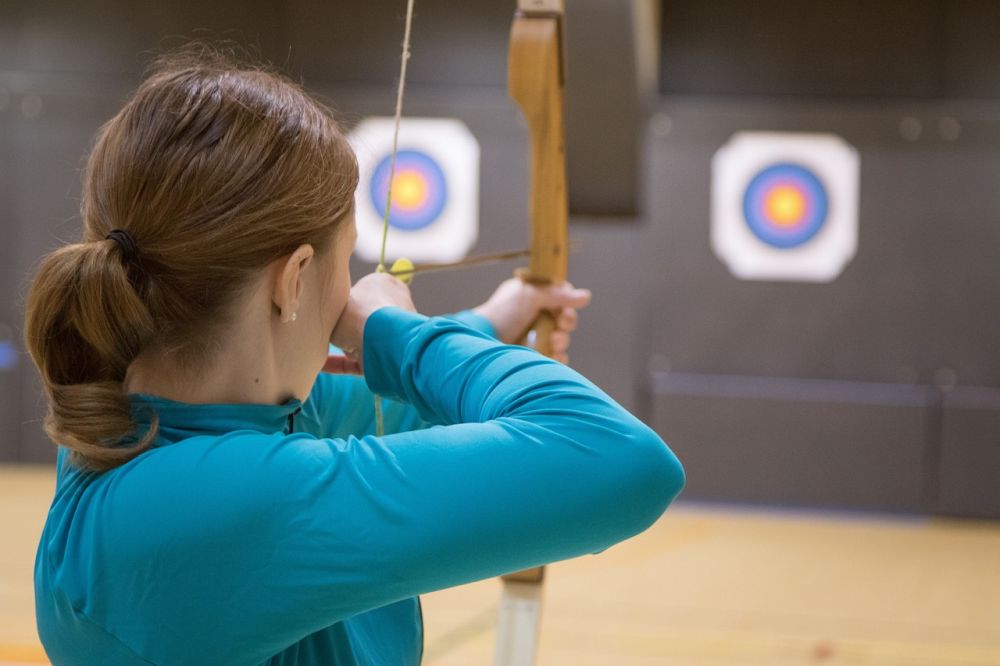Contents
Foundational Lighting Dynamics
Indoor lighting holds a profound sway over the dynamics of archery shooting, dictating the clarity of vision, the precision of aim, and the overall performance consistency of archers. The interplay between lighting quality, intensity, and distribution shapes the archery experience in multifaceted ways, deeply intertwined with perceptual and cognitive processes crucial for successful shooting.
Optimal Visibility for Precision
Optimal indoor lighting, characterized by bright, uniform illumination across the shooting range and target area, serves as the cornerstone for enhanced performance. In such conditions, archers benefit from heightened visibility, allowing them to discern intricate details on both the target face and their arrow points with remarkable clarity. This heightened visual acuity facilitates a profound depth of field perception, empowering archers to gauge distances more accurately and execute finely tuned adjustments to their aim with confidence.
Sharp Definition and Target Focus
Moreover, favorable lighting conditions engender a stark contrast between the target and arrow point, accentuating the delineation between these critical elements of the shooting process. The sharp definition afforded by adequate lighting not only facilitates precise alignment of the shot but also fosters a sense of visual cohesion, wherein the target becomes a singular focal point for the archer’s concentration. In essence, good lighting acts as a catalyst for seamless synchronization between the archer’s visual perception and motor control, laying the groundwork for consistent and accurate shooting.
Psychological Impact and Confidence
Beyond its immediate effects on visibility and target acquisition, indoor lighting also influences the psychological disposition of archers during their shooting endeavors. A well-lit environment fosters a sense of confidence and assurance, instilling archers with the belief that they possess the requisite clarity of vision to execute their shots with precision. Conversely, inadequate lighting can introduce feelings of uncertainty and apprehension, casting doubt on the accuracy of one’s aim and sowing seeds of hesitation in the shooting process. Thus, the psychological ramifications of lighting underscore its pivotal role not only in facilitating optimal performance but also in shaping the overall mindset and approach of archers on the range.
Comprehensive Lighting Considerations
Furthermore, the impact of indoor lighting extends beyond mere illumination, encompassing considerations of color temperature, glare, and ambient brightness. The choice of lighting fixtures and their respective characteristics can significantly influence the visual environment of the shooting range, with warmer or cooler hues eliciting distinct perceptual responses from archers. Additionally, the mitigation of glare, whether from overhead lighting or reflective surfaces, is crucial for preserving visual comfort and minimizing distractions during shooting sessions. As such, a holistic approach to lighting design in indoor archery facilities necessitates careful consideration of these factors to create an optimal setting conducive to peak performance.
Competitive Arena: Lighting as a Game Changer
In the realm of competitive archery, where precision and consistency are paramount, the significance of indoor lighting becomes even more pronounced. Tournaments held in indoor venues demand meticulous attention to lighting arrangements, as the stakes are high and the margins for error are slim. Organizers must strive to create an environment that affords all participants equitable access to optimal lighting conditions, thereby ensuring a level playing field where performance is determined by skill rather than environmental variables. In this context, the role of lighting transcends its technical function, emerging as a critical determinant of sporting equity and the integrity of competitive outcomes.
The Pitfalls of Poor Lighting
Conversely, subpar indoor lighting introduces a host of impediments that can undermine an archer’s performance and erode shooting proficiency. Insufficient brightness, uneven lighting distribution, or the presence of shadows can obscure vital details on the target face, impeding the archer’s ability to identify aiming points or accurately judge distances. Inadequate lighting conditions may also precipitate ocular strain and fatigue, sapping the archer’s focus and exacerbating inconsistencies in shooting technique.
Conclusion
In conclusion, the significance of indoor lighting in archery shooting cannot be overstated, as it exerts a profound influence on key aspects of the shooting process, including visibility, contrast, and depth perception. By cultivating an environment characterized by optimal lighting conditions, archers can harness the full potential of their visual faculties, honing their ability to aim with precision, maintain consistency in performance, and ultimately elevate their proficiency on the range.

